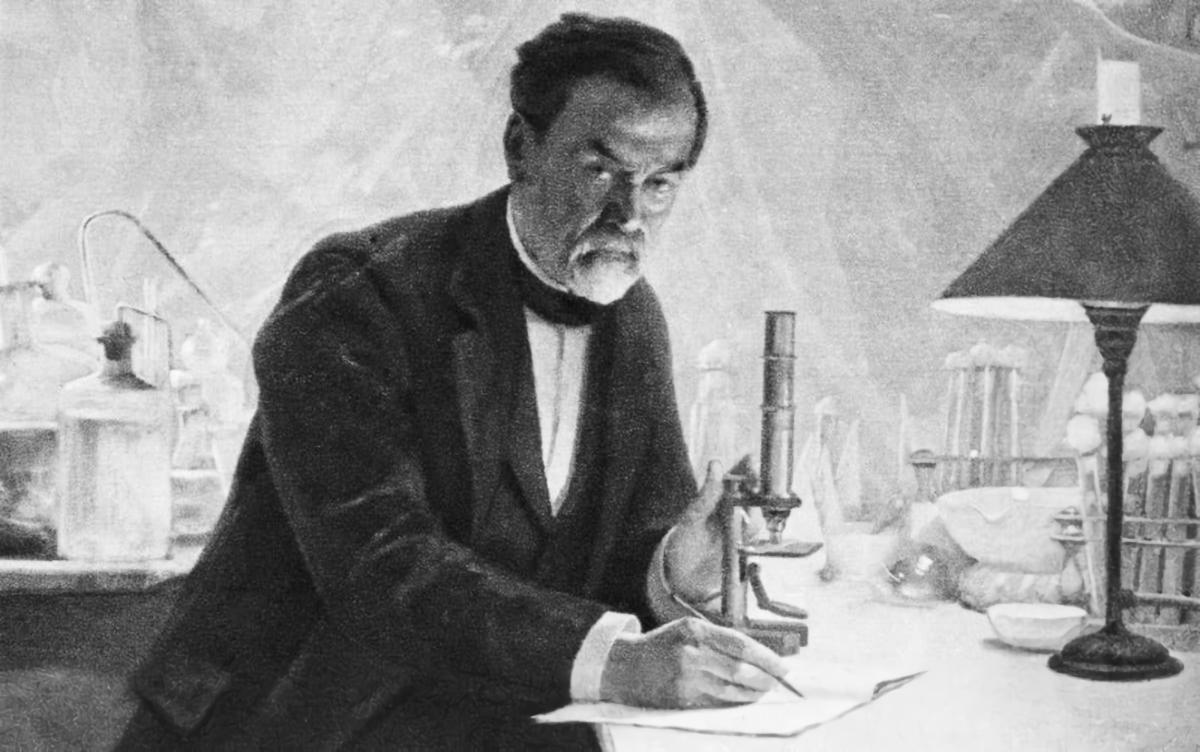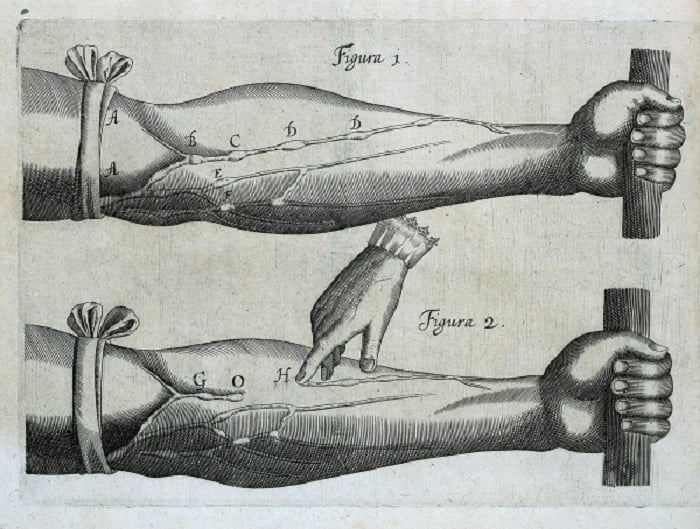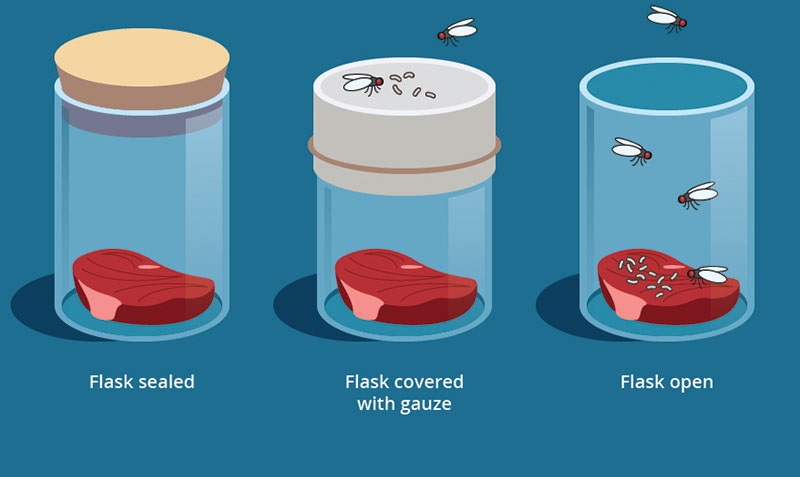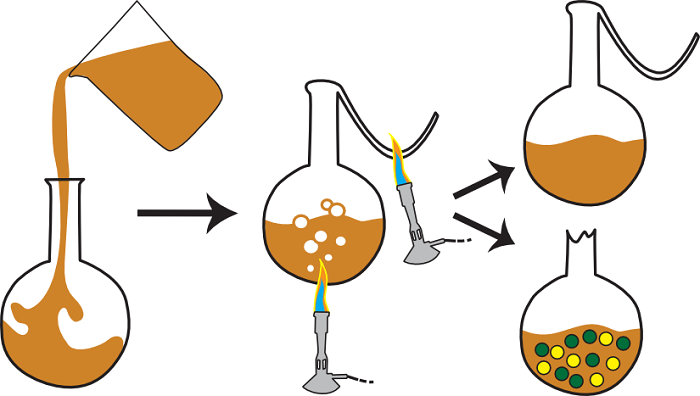According to modern biology, all living things can only produce offspring from other living things through reproduction. Today, this view is not controversial anymore, but when the basic principles of biology were in their infancy, many scientists believed in a theory called “abiogenesis“—the idea of spontaneous generation of life. Long after Aristotle said that living things could come from nonliving things, some people still thought there were “recipes” for making living things from nonliving things.
For example, in the 17th century, Dutch doctor Jan Baptist van Helmont explained that a mature mouse would come out of wheat grains and dirty underwear left in a jar outside. Until the 19th century, there were still those who advocated spontaneous generation. In 1859, a smart experiment by a French microbiologist named Louis Pasteur put an end to all superstitions.
Louis Pasteur, founder of microbiology

During his research, he also proved that infectious diseases are caused by living microbes. Before Pasteur, it was suspected that the disease or decay was specific to organisms, but that was never proven. Until microscopes proved otherwise, the concept of unseen “tiny creatures” was dismissed as fanciful.
In 1546, Italian doctor Girolamo Fracastoro came a little closer to expressing the microbes by using the term “infectious seeds.” But he couldn’t make it clear that they were alive and reproducing, and his theory did not make an impact. Instead, people believed that the fever was coming from rotting substances, that is, bad air, which was causing infectious diseases. The studies on the structure of microbes have shown us that the transmission of germs and the spreading of life are actually two different sides of the same thing.
The first scientific findings

Scientists tried to find the origins of living beings in the 17th century by studying the reproduction process. In 1661, the English doctor William Harvey (who discovered blood circulation) cut off a pregnant deer to discover the origin of a fetus and declared the phrase “omne vivum ex ovo“—all life [is] from life. Although he could not find the egg, it was still certain that he implied what would eventually happen.
The Italian doctor Francesco Redi became the first to present experimental evidence for the impossibility of spontaneous generation—at least for the living things that the human eye can see. In 1668, he studied the rotting process of meat. He wrapped one piece of meat in parchment and left the other exposed to the air. Only the exposed meat produced maggots because flies landed on top and laid their eggs. Redi repeated the experiment by covering the meat with a cheesecloth. He saw that the fly eggs gathered from the cheesecloth could be used to “inseminate” meat with maggots. Redi went ahead and announced that the maggots could only come from flies and not by spontaneous generation.
However, the importance of Redi’s experiment was not understood, and even Redi himself, who did not fully reject abiogenesis, believed it to occur in certain conditions. The Dutch scientist Antonie van Leeuwenhoek, who created the first handmade microscope and used it for detailed scientific examination, discovered that some creatures were too small to be seen with the naked eye, and the growth of large creatures was due to small microscopic creatures such as sperm.
Lazzaro Spallanzani’s experiment

Still, the idea of abiogenesis had settled so deeply in the minds of scientists that many thought that these microscopic organisms were too small to have a reproductive organ, so they must be born spontaneously. In 1745, the English naturalist John Needham undertook to prove it. He knew that heat could kill germs; so he boiled some broth in an experimental tube, killed the germs, and then let the tube cool down. After observing the broth for a while, he saw that the microbes reproduced. He concluded that living things can generate spontaneously in a germ-free broth. Twenty years later, Italian physiologist Lazzaro Spallanzani repeated Needham’s experiment. However, he saw that the microbes did not reproduce when the test tube was sealed from the air. Spallanzani thought that the air “fertilized” the broth.
In modern biology, the results of Needham’s and Spallanzani’s experiments can be simply explained. Although heat actually kills many microbes, some bacteria, for example, can evolve into heat-resistant spores. Many microbes, like many living things, use the oxygen in the air to gather energy from food. However, such experiments are always open to infection—millions of microbes suspended in the air can easily colonize such tools in a very short time. Therefore, none of these experiments effectively addressed the problem of abiogenesis.
Pasteur’s most effective experiment

Microscopes and microbiology had advanced sufficiently for this problem to be solved hundreds of years later. Louis Pasteur’s experiment showed the presence of microbes hanging in the air, waiting to infect anywhere they were exposed. He first filtered the air with cotton, then analyzed this cotton and zoomed in on the particles attached to the cotton with a microscope. He noticed the vast amount of microbes on the spoiled and rotten food. The microbes were causing the decay as if they were falling from the air. This was an important piece of information that Pasteur would use in the next step; he accepted the challenge of the French Academy of Sciences and disproved the theory of spontaneous generation.
In the experiment, Pasteur boiled the nutrient-rich broth—just as Needham and Spallanzani did 100 years ago—but this time made a drastic change in the flask. He heated the flask and cooled it down, then he moved it up and down and shaped it into the form of a swan’s neck. When the assembly was cool, although the temperature was still suitable for the growth of the microbes and the flask was in contact with the outside air, the microbes did not fall on the broth, as part of the flask was curved downwards. There was only one way for the microbes to grow in the flask, and that was by spontaneous generation, which did not happen.
Pasteur repeated the experiment, which became an indicator for the microbes infecting the broth from the air, but this time he broke off the swan neck of the flask. And the broth was infected. The experiment finally disproved spontaneous generation and proved that every living thing comes from other living things. It was clear that no rat would come out of a dirty jar, nor would germs spontaneously come out of a flask filled with broth.
The return of abiogenesis
In 1870, British biologist Thomas Henry Huxley supported Pasteur’s work at a meeting titled “Biogenesis and Abiogenesis.” This was an overwhelming blow to the last supporters of abiogenesis and led to the birth of effective biology that is based on cell theory, biochemistry, and genetics. By the 1880s, German doctor Robert Koch had shown that anthrax was spread by an infectious bacterium. Still, about 100 years after Huxley’s speech, a new generation of scientists started to think that abiogenesis was how life started on Earth.
In 1953, American chemists Stanley Miller and Harold Urey gave an electric current to a mixture of water, ammonia, methane, and hydrogen to revive atmospheric conditions at the beginning of life on Earth. In just one week, they produced amino acids—the building blocks of proteins and the basic chemical components of living cells. Miller and Urey’s experiment led to so many new studies aiming to show that a living organism could arise from inanimate matter. The scientists were now much more equipped with biochemistry tools and knowledge of processes that took place billions of years ago.

